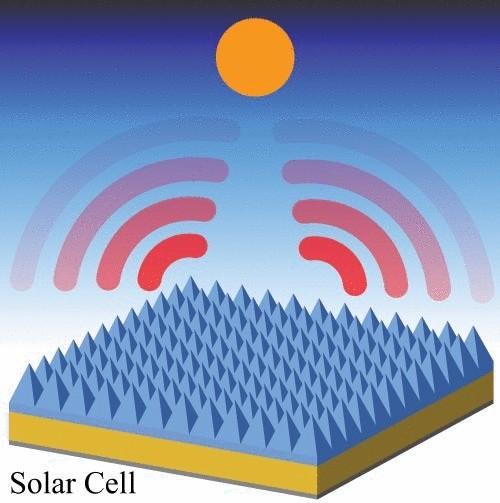Engineers have proposed a passive method of cooling solar panels
 Bashny.Net
Bashny.Net

Stanford University researchers revealed that adding a layer of silica glass to the solar panel prevents unnecessary thermal radiation.
This technology news will probably be one of the potential ways to create a highly efficient, durable solar cells. Under normal operating conditions, solar cells can get very hot. It quickly undermines their effectiveness, reduces the lifetime. Stanford scientists have proposed to avoid such problems by passive cooling method. The special structure of tiny pyramids and cones on the surface of the fine quartz sand redirects unwanted heat in the form of infrared radiation back into the atmosphere.
As explained Linxiao Zhu, a physicist: "Our new passive approach can lower the operating temperature of solar cells to improve energy conversion efficiency and significantly increase their life expectancy".
Light waves of different lengths interact with solar cells in different ways. Visible light is the most efficient at generating electricity while infrared is more efficient at conducting heat. Depending on the wavelengths, they are refracted in different ways, depending on the type and form of material in which they are held. Scientists used these basic principles to create new technology.
To test the hypothesis, the researchers compared two different silica: a flat surface approximately 5 millimeters, and the other a thinner layer covered with pyramids and micro-cones just a few microns thick. The size of these functions is important. Controlling the width and height of the pyramids and micro-cones, you can configure them to refraction and redirection of unwanted infrared from a solar cell, back into space.
Source: nauka24news.ru/
Tags
See also
California chemists figured out how to make high-performance plastic solar panels
Self-adhesive solar panels
Created by sputtering a solar panel to any surface
MIT Scientists use the old acid car batteries to generate solar panels
An effective Union of solar panels and fuel cell
Dietary Supplement became the basis of low-cost solar panels
Solar panels have learned to do with a particle accelerator
















